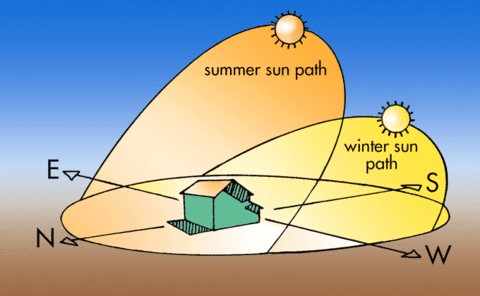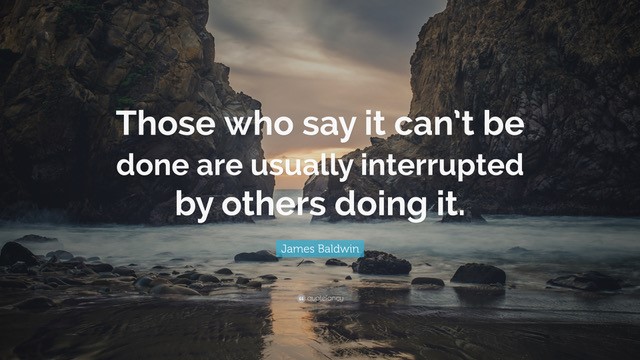This used to be an internal memo. It was written for the members of LUCIMA.
Pushing the Limits
You’re capable of more than you think.
One of the mantras I live by is to constantly explore the limits. Whether these are physical limits, psychological limits or other, I’m constantly running experiments to define the world I live in. As a result, I live in a world that is uniquely my own, one that is slightly different than yours. Not to say that my world doesn’t conform to gravity or aging or other finite limits to human experiences but rather that I live in a version of the world that is simply less defined by others.
I’ve been conditioned since childhood to push the boundaries and question my reality. Admittedly that makes me difficult to live with. On the other hand, that makes me an ever-evolving individual as I’m always changing my views and creating new behaviors. Why? I hate hard rules. Probably foremost because I hate authority. But also because I don’t believe everything I hear (which makes me somewhat of a knucklehead as I have to learn things the hard way). I once said “Learn the rules so you know how you can break them”. I literally have lifetimes of these examples where I’ve discovered something, a caveat, an exception, or the real reason for why the original hard rule existed.
For example, the hard rule in outdoor portraiture (including wedding photography outdoors) is that you shouldn’t shoot at high-noon (12 o’clock). Why? Because the sun creates harsh shadows at high-noon. So if I were a less questioning individual, I would simply accept this rule for fact and avoid high-noon. Instead because it was a huge inconvenience NOT to shoot at high-noon, I thought long and hard about the relationship between the sun and said harsh shadows and realized that the issue was not the sun itself but rather the relationship between the sun and our tendency to walk upright and look at the horizon (90º to the sun). Therefore, the least appealing lighting angle is where the sun is directly over our heads and casting harsh shadows under our eyes. Likewise, the most (generally accepted) appealing lighting angle is sunset (0º) or a couple hours before sunset when the sun is somewhere between the horizon and slightly above our heads (15-30º).

Herein lies the actual challenge. We can’t move the sun. But can we still change the lighting angle? Do we have to stand upright and look into the horizon? What if we instead lay flat on the ground instead and looked directly at the 12 o-clock sun? Voila! I’ve basically simulated the angle of sunset lighting as all the harsh shadows disappear and I’m happily shooting when all the other photographers are waiting for 3-4PM.

Also, what if I lived in some other part of the world where the sun is not directly over our heads at high noon? For example Barrow, Alaska where there are two months out of the year when the sun doesn’t rise at all. If the sun doesn’t shine at all, what does it matter what time of the day it is? Or what if I lived in Los Angeles but wanted to shoot at high noon in the dead of winter when the sun doesn’t reach 90º directly above our heads but instead travels along a nice low ellipses because of the tilt of the Earth?
As an aside, one of my European students said to me once during a workshop, “I love Los Angeles. Even the color of the sun is different here”. At the time, I denied that the color of the sun could be different at different parts of the world. However, in retrospect the difference between summer light and winter light is dramatic. Because the sun travels lower during winter (for the northern hemisphere), the light has to penetrate more atmosphere and therefore the color changes and the intensity decreases. It’s why there’s less UV at dusk and dawn as opposed to high noon.

Source BuildingGreen
So can you shoot at 12PM? Absolutely, but you have to truly understand the challenges and the relationship of the sun with the human face/form to understand how to break the rules. Because that’s the problem with rules, they’re lazy. Let me repeat. Blindly adhering to rules makes people lazy and absent-minded. Rules take all the responsibility and power away from the individual and place those responsibilities and power in a system, a government, an institution. These structures are created to control you and limit your freedoms to think independently and creatively for yourself. It’s good for the masses, but it’s not good for me. I first want to know why these rules exist, then I want to know how I can create a reality that I can conform to. No doubt that there are plenty of rules that I cannot break (such as gravity), many of which I might have learned the hard way but ultimately I digested and assimilated it into my version of reality.
There’s a James Baldwin quote that hung on the walls of the hallways of the building that used to be for physical education at my old high school that embodies this idea.

This picture isn’t the actual poster (I believe it was of a mountain or a mountain climber)
Source quotefancy
But how do you know where the limits lie if you don’t go and see them for yourself? I understand that some of these rules were created to ensure our safety and survival. Sure, I get that. But how many of these rules are also limiting us from reaching our true potential? It’s why I love this following picture so much and why there’s so much to be learned from this single picture.

So what happened? Clearly this guy shat himself. But if you read between the lines, it becomes apparent that this guy took a chance that his upset stomach wouldn’t result in catastrophe and unfortunately lost that bet. Hence “Gambled. Lost.” Furthermore, this guy demonstrates to me the epitome of pushing yourself to the limit. I have had several upset stomachs in my training runs and rides. Never once have I dedicated myself so fully to the act of completing my run/ride that I shat my pants. Never. I have always either made it to a bathroom in time to relieve myself or worst case scenario relieved myself in some bushes in the mountains. But never my pants. The act of shitting your pants requires true dedication. But I can’t honestly say I have ever pushed myself that hard.
And that’s the true lesson of this article. If you don’t push yourself, how do you know where the limits lie? They say you shouldn’t swim immediately after eating. Why not? Cramps I think. Fear of drowning? Turns out this is a myth. But if this is a myth, then I wonder how many other myths are also limiting my true potential? If I don’t test the limits myself, I’ll never know.
Do your homework. Question your reality. Don’t be lazy. Don’t rely on secondhand information. Figure out why and why not. Don’t live by hard rules. Another perspective is that if I do things the same way everyone else does them, then I’ll simply achieve the same results as everyone else. That doesn’t appeal to me because as I look around the world, I see a lot of very average people living very average lives. And while these people are leading simpler lives without having to think for themselves they are simultaneously less fulfilled because they aren’t living to their fullest potential. Here’s a fun fact. Nothing worth doing is ever easy. Living easy and skating through life will never create a life of true gratification. You have to push yourself and risk something and if you’re lucky you’ll come out battered and bruised but victorious on the other side when you’ve achieved your goals. But the goals have to be lofty enough and the work has to be hard enough for the results to actually mean anything. Otherwise you won’t be able to truly appreciate the results.
What does this mean for us at LUCIMA? Pretty simple really. As a company we will not follow an orthodox approach. Neither to investing nor to running a business. We are not going to follow the rules but neither are we going to break the law. It’s more a philosophical difference to how we operate, how we are perceived (how we market ourselves), and how we venture into the unknown. But ultimately I can assure that there are no business models for LUCIMA to emulate because LUCIMA is unique to the personality and person of Charles LUCIMA. This very fact makes our business completely without precedence or fear of being copied.
What this means for the members of LUCIMA is that this is going to be an interesting experience. I hope each member of the team brings their “thinking caps” and asks themselves “What would Charles do?” During challenging situations (or even mundane situations). Each member of the team needs to on some level be independent and embody the spirit of free-thinking in order to achieve his/her own potential in this company. LUCIMA as an organization does not create hard rules for people to adhere to and is therefore a place for individuals to create their own methodology and structure. The tasks and projects you experience at LUCIMA will not be “cookie-cutter”. You will not be told how to accomplish these challenges. There are no manuals and/or instructions for how to fulfill most of your duties. So it is paramount for you to spend some time designing your role for the optimal outcome; one that benefits the company while catering to your strengths and personality. Just remember, it is supposed to be hard. The results are not going to come overnight and eventually you’ll take this new paradigm into the rest of your life and change the way you live.
And live better.
So push yourself. The company’s legacy and your own legacy depend on your ability to fulfill your potential.
Read part II of this series: The Art of Being Uncomfortable
